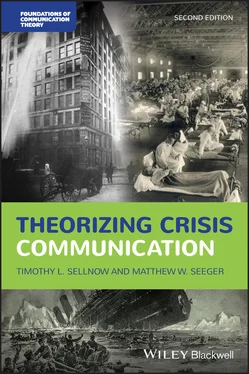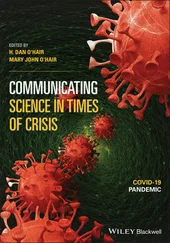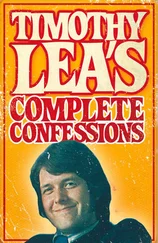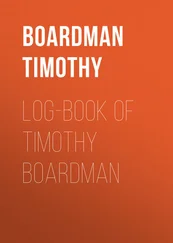More contemporary notions of communication draw on a much broader set of concepts and describe a much more dynamic and transactive process. Participants are described simultaneously as senders and receivers, transacting and co-creating meaning through the ongoing and simultaneous exchange of a variety of messages using multiple channels. One of the best examples of this approach is Barnlund’s (1970) transactional model, initially developed as a theory of interpersonal communication. This approach emphasized the view that communication is a complex process that is dynamic, continuous, circular, and unrepeatable. Communication involves encoding and decoding systems, ongoing feedback loops, and the ongoing, co-creation of meaning.
Other views of communication emphasize different aspects of the process and many of these conceptualizations have direct application to communication in crisis contexts. Dance (1967), for example, argued that communication is both dynamic and cumulative in that it is heavily influenced by past experiences. Thus, previous experiences with a crisis influence the interpretations and communicative choices one makes. During the response to Hurricane Katrina, for example, the agencies responsible for crisis management made mistakes that damaged their reputations. This undermined their credibility, making subsequent efforts more difficult. Cushman and Whiting (2006) developed a framework that suggested much of the meaning derived through communication is created through the rules governing the communication process. During a crisis, some of these rules may no longer function and involve new actors in new contexts; thus, communication may become more complex and less effective. In other cases, new rules may surface or be imposed, influencing how meaning is created. Many theorists emphasize the symbolic nature of the process. Communication relies on symbols or an arbitrary but agreed-upon system of labels and representations that carry or encode the message and connect the message to larger systems of meaning. During crises, symbols, such as warning signs and sirens, can play an important role. In fact, many crises, like 9/11, become their own meaning systems, conveying values, ideologies, and specific views of power.
Ultimately, communication is about the construction of meaning, sharing some interpretation or consensual understanding between senders/receivers, audiences, publics, stakeholders, or communities. Scholars differ on the locus of that meaning. The mass communication theorist McLuhan (1964) offered the view that the medium is the message, suggesting that any technology (medium) used to distribute meaning directly affects the meaning that arises. Thus, the warning siren becomes the message.
Contrasting this view are the general semanticists who argue that meaning is in people’s interpretation of symbols and thus exist in the communicators’ cognitive processes. People who have experienced the pain and trauma of a disaster, for example, carry an interpretive system of meaning associated with disasters that is not available to others. Communication can also be understood to occur within a larger ecology (Foth & Hearn, 2007). This may include the media used, relationships, networks, history, and the larger social, political, cultural, and economic context. Communication both influences and is influenced by the context and ecology. A crisis, for example, creates a specific context, which influences communication activities, and the communication activities also influence the context. Digital communication technology, including social media and handheld devices, has significantly altered the ecology of crisis communication. Some researchers argue that these technologies have repositioned those who are at the center of the crisis as active sources and senders of information rather than as passive receivers (Pechta et al., 2010).
An additional view of communication important in consideration of crises is the communicative constitution of organizations (CCO) perspective. This view, developed initially by McPhee and Zaug (2000) and expanded by others, suggests that organizations are constituted in and through human communication. Communication is the fundamental process whereby organizations are created by individual actors and actions. Organizations are “ongoing and precarious accomplishments realized, experienced, and identified primarily – if not exclusively – in communication processes” (Cooren et al., 2011, p. 1151). The CCO perspective unifies a number of views from systems theory, narrative theory, social constructivism, and critical theory, among others (Putnam et al., 2009). CCO also foregrounds a number of competing views regarding what constitutes an organization. Some perspectives, for example, emphasize the material and substantive nature of an organization, while others emphasize organizing as an ongoing process. Still others suggest that an organization is simply the coordinated behaviors of individuals. Communicative processes and outcomes may play roles in each of these views of organizations.
One of the widely used approaches to CCO is the concept of the four flows of communication introduced by McPhee and colleagues. The four flows include organizational self-structuring, membership negotiation, activity coordination, and institutional positioning. These are described as “flows” because they are interactive yet enduring, take many forms, and occur in many contexts by many participants (McPhee, 2015). Organizational self-structuring is a deliberative, reflexive process whereby the structuring processes, such as norms, rules, and hierarchies, are created and communicated. Membership negotiation concerns the ways in which individuals are recruited to become part of the organization, establish and maintain relationships, and are socialized into the organizational culture. Activity coordination involves the collective coordination of member activity. The activities of individuals in organizations are interdependent and must be coordinated and assembled in a unified way. The final flow concerns the macro-level positioning of the organization in relation to the larger environment. This form of communication is necessary for organizations to have an independent and recognizable identity (see McPhee & Zaug, 2008; McPhee et al., 2014).
The CCO perspective may be especially relevant to crisis contexts because crises often disrupt these flows and the resulting organizational processes. Crises can change identity, disrupt patterns of coordination; shift roles, hierarchies, and responsibilities, and change membership patterns. In addition, crises often give rise to emergent organizations that respond to the crisis, such as volunteer and support groups and search and rescue groups. Crises are important forces in shaping and creating organizations and CCO can help explain these developments.
Finally, communication scholars have also described the functions of communication. These approaches, such as functional decision theory (Gouran, 1982) and media uses and gratifications theory (McQuail, 1983), emphasize the instrumental nature of communication; that is, communication allows for the intentional creation of certain outcomes. Functional approaches focus on the results or outcomes of communication behaviors and processes. This perspective sees communication as a tool senders and receivers use to accomplish goals, solve problems, make decisions, influence others, and coordinate actions. Communication may be more or less effective in accomplishing these outcomes depending on its structure, how it is used, what audiences it targets, and what channels are employed, among many other factors. Managing a crisis often requires the cooperation of various agencies, groups, and community members. In many cases, this cooperation requires communication; thus, communication is an instrument of cooperation.
Читать дальше












